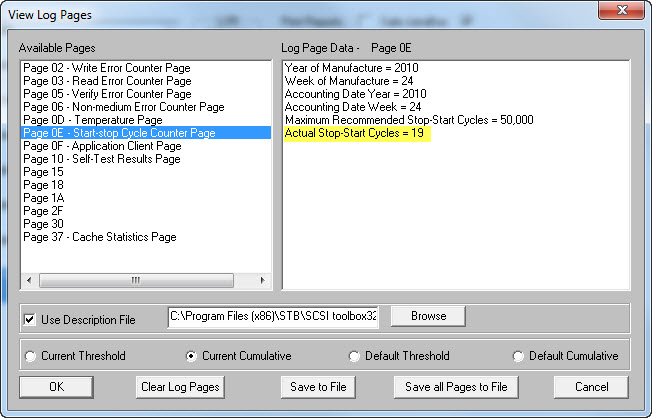A SCSI, SAS, or Fibre Channel disk drive has Log Pages, which contain information that has been collected as the drive has run and been used. There are a number of Log Pages with different information stored in them, such as Read Errors, Write Errors, and others.
By right-clicking on your disk drive and choosing the View Log Pages choice you can look at all of the information that has been collected. The information is organized with the Log Page shown on the left side of the display and the more detailed Log Parameters for each Log Page shown on the right side. To show the detailed Parameters for a given Page simply double-click on the Log Page you are interested in.
One interesting example of a Log Page is the Start/Stop Cycle Counter page – Log Page 0x0E.

Here you will see the year and week that the drive was manufactured. This can be good information to have available if for instance a drive manufacture were to warn of a problem with drives made in a certain date range.
Also shown are the Maximum Recommended Start-Stop Cycles and the Actual Start-Stop Cycles. The Maximum value is a number that the drive manufacturer recommends not be exceeded over the life of the drive. The Actual value is exactly that – the actual number of times the drive has been stopped and started. As an example I stopped the drive (right-click on the drive then pick Stop Drive or Start Drive), started the drive back up, and then looked at the Log Pages again – and sure enough the Actual value is now 20 –

With a manufacturers recommended 50,000 stop-starts I know that this drive should be good for another 49,980 or so stop-stop cycles!
Log Pages are full of mostly useful information. The best way to learn more about what information can be found in a given drive is to look at the drive manufacturers SCSI Command reference documentation.